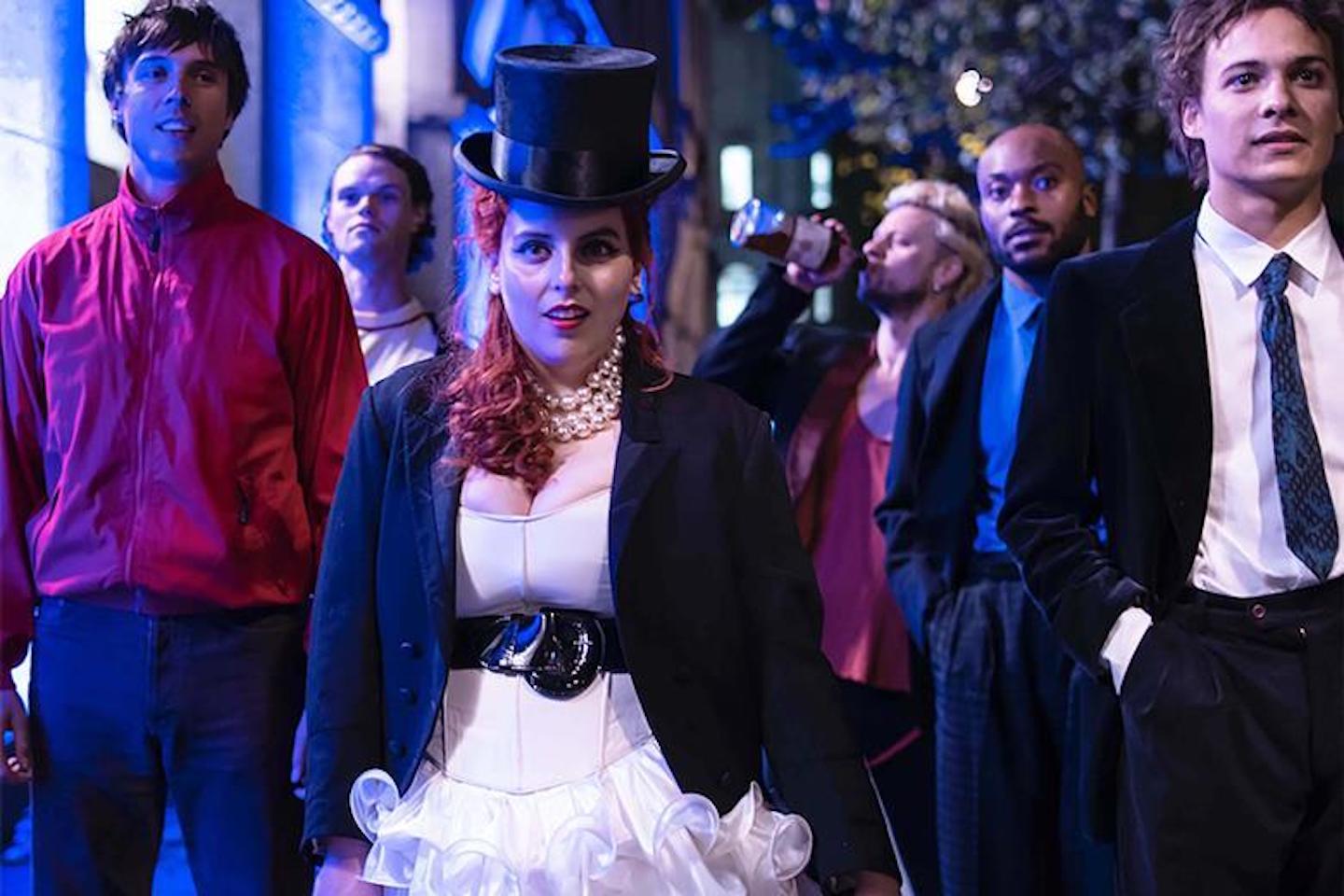At 26, Beanie Feldstein's teen years are far behind her, but she certainly captures the essence of teen girlhood to a T. After a scene-stealing role as unhip best friend Julie in the 2017 angsty teenage flick Lady Bird, followed by a raunchy co-starring role in 2019's teen buddy comedy Booksmart, Feldstein takes center stage in How to Build a Girl (out now on demand) as another strong-willed teenage girl who dreams beyond the restrictions of her circumstances. She plays Johanna Morrigan, a mousy, painfully earnest and friendless (save for the family dog) working class 16-year-old from Wolverhampton, England, who, through sheer determination and talent, lands a job as a music critic in the ultra-hip 90s British rock scene.
The script for How to Build a Girl was written by feminist journalist Caitlin Moran and is based on her eponymous 2014 novel. Both stories draw heavily from Moran's life as a poor, overly enthusiastic teenager growing up on a rough council estate with big writing dreams. Feldstein and the character she plays share a sense of unbridled gregariousness. "I felt an instant intense connective tissue between the two of us, especially the place that she begins in the film. It's just it's really pure," Feldstein said
"Caitlin's writing and our movie is really giving teenage girls permission to be free. We don't need to listen to society, we don't need to listen to that voice in the back of our heads. We can try, we can fail, and that's okay. So why not try?" Feldstein added.
With the aid of her brother Krissi (Laurie Kynsaston), her "God Wall," a collection of photos of historic figures all brought to life by celebrities like Lily Allen (doing an Elizabeth Taylor impersonation) and Jameela Jamil (silently side-eyeing as Cleopatra), and her own unrelenting audacity, Johnanna enters a writing contest to become a rock critic at an NME-esque music magazine. When she gets ridiculed by the staff for turning in a review of the Annie soundtrack, she demands a second chance then transforms herself into Dolly Wilde, a red-haired critic dressed in thrift store top hats and tuxedo jackets. She enters the notoriously snarky, male-dominated world of 90s rock journalism ready to leave behind the Johanna that loses her bloody maxi pad on a pommel horse during gym class (a truly gut-busting scene).

"Johanna is this optimistic, cheerful girl who loves things, and she goes into an adult world full of men, where enthusiasm is seen as a working class thing," Moran explained. It's seen as a lesser, juvenile trait; it's seen as a female thing. It's something to be crushed out of you. The best way to be is to become cynical and to be destructive and to be hateful, and that's how you prove you're a grownup and you can hang out with the cool boys."
Johanna's writing transforms from exuberant to vitriolic, otherwise losing her job. As a result, she gains her meteoric notoriety, a bevy of willing sexual partners, high school popularity, and the ability to support her struggling family financially. Eventually, she finds that being cruel to be cool gains her no real friends and, as Moran puts it, "just doesn't suit her." And she takes the important steps to accept accountability and rebuild herself again into a person unafraid to have a heart.
"What I wanted to do more than anything with this film was reach a sort of universal audience, make a universal story. I didn't want it to feel small and parochial and just about this one place. I wanted it to feel relevant to any young person who's struggling or has struggled or has been through those things and come out the other side. I mean, I wish I'd seen this film when I was 16," director Coky Giedroyc told VICE.
Unlike many film and television series that depict the lives of young women, Johanna makes mistakes and learns from them, and isn't brutally punished for her transgressions. She doesn't become an addict (like in Euphoria or Thirteen); she isn't sexually assaulted, physically hurt, or killed (Waves, Crossroads, Welcome to the Dollhouse, It Follows); she doesn't spiral into a dark place (Kids, The Virgin Suicides, Heavenly Creatures). Moran didn't want Johanna's motivation to be rooted in trauma, or for her to experience trauma in the process of coming of age. "I just can't bear seeing female characters being tortured like this constantly... Obviously awful things happen to women, and I am the last person to deny that but I also need there to be a world where you can watch a film as a woman, and just not see someone being tortured by life," said Moran.
"The fact that if you sit down to watch something about a teenage girl, there's a part of you going, okay, where is this going to go really horribly wrong for her? As soon as she's sexually active? For my generation, Jaws was the big one," added Moran. "As soon as you see that girl on the beach having sex with that boy, you're like, okay she's going to get eaten by shark and she deserves it because she wanted to have sex. And we still kind of have that trope in movies and TV now. If you're a sexually active girl, you're going to get eaten by a shark, either actually or metaphorically. I just wanted no sharks in my movie."
Feldstein agreed with that sentiment. "I think Caitlin is so brilliant in pointing that out, because it is so often that young girls in particular don't come out on top. They don't succeed, or they aren't given the space to fail."
from VICE https://ift.tt/2WYtP7t
via cheap web hosting
No comments:
Post a Comment